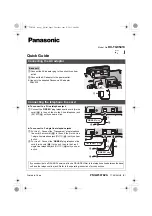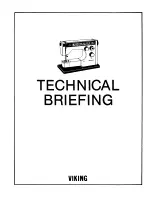
UF-E1
178
6.5.9.
POP (Post Office Protocol Version 3)
6.5.9.1.
Introduction
On certain types of smaller nodes in the Internet it is often impractical to maintain a message transport sys-
tem (MTS). For example, a workstation may not have sufficient resources (cycles, disk space) in order to
permit a SMTP server and associated local mail delivery system to be kept resident and continuously run-
ning. Similarly, it may be expensive (or impossible) to keep a personal computer interconnected to an IP-
style network for long amounts of time.
The Post Office Protocol - Version 3 (POP3) is intended to permit a workstation to dynamically access a
maildrop on a server host in a useful fashion. Usually, this means that the POP3 protocol is used to allow a
workstation to retrieve mail that the server is holding for it.
For more detail, please refer to URL of http:// www.imc.org/rfc1939
6.5.9.2.
Basic Operation
Initially, the server host starts the POP3 service by listening on TCP Port No. 110. When a client host
wishes to make use of the service, it establishes a TCP connection with the server host. When the connec-
tion is established, the POP3 server sends a greeting. The client and POP3 server then exchange com-
mands and responses (respectively) until the connection is closed or aborted.
Commands in the POP3 consist of a case-insensitive keyword, possibly followed by one or more argu-
ments. All commands are terminated by a CRLF pair. Keywords and arguments consist of printable ASCII
characters. Keywords and arguments are each separated by a single SPACE character. Keywords are
three or four characters long. Each argument may be up to 40 characters long.
Responses in the POP3 consist of a status indicator and a keyword possibly followed by additional informa-
tion. All responses are terminated by a CRLF pair. Responses may be up to 512 characters long, including
the terminating CRLF. There are currently two status indicators: positive ("+OK") and negative ("-ERR").
Servers MUST send the "+OK" and "-ERR" in upper case.
Responses to certain commands are multi-line. In these cases, which are clearly indicated below, after
sending the first line of the response and a CRLF, any additional lines are sent, each terminated by a CRLF
pair. When all lines of the response have been sent, a final line is sent, consisting of a termination octet
(decimal code 046, ".") and a CRLF pair. If any line of the multi-line response begins with the termination
octet, the line is "byte-stuffed" by pre-pending the termination octet to that line of the response.
Hence a multi-line response is terminated with the five octets "CRLF.CRLF". When examining a multi-line
response, the client checks to see if the line begins with the termination octet. If so and if octets other than
CRLF follow, the first octet of the line (the termination octet) is stripped away. If so and if CRLF immediately
follows the termination character, then the response from the POP server is ended and the line containing
".CRLF" is not considered part of the multi-line response.
A POP3 session progresses through a number of states during its lifetime. Once the TCP connection has
been opened and the POP3 @server has sent the greeting, the session enters the AUTHORIZATION state.
In this state, the client must identify itself to the POP3 server. Once the client has successfully done this, the
server @acquires resources associated with the client’s maildrop, and the session enters the TRANSAC-
TION state. In this state, the client requests actions on the part of the POP3 server. When the client has
issued the QUIT command, the session enters the UPDATE state. In this state, the POP3 server releases
any resources acquired during @the TRANSACTION state and says goodbye. The TCP connection is then
closed.
A server MUST @respond to an unrecognized, unimplemented, or @syntactically invalid command by
responding with a negative status @indicator. A server MUST respond to a command issued when the ses-
sion is in an incorrect state by responding with a negative status indicator. There is no general method for a
client to distinguish between a server which does not implement an optional command and a server which
is unwilling or unable to process the command.
Содержание UF-E1
Страница 2: ...UF E1 UF E1CN 2 ...
Страница 11: ...UF E1 7 External View ...
Страница 12: ...UF E1 8 Control Panel ...
Страница 20: ...UF E1 16 Notes ...
Страница 24: ...UF E1 20 20 Remove five connectors 21 Three Screws F9 22 Remove SC PCB 6012 21 20 22 21 20 ...
Страница 30: ...UF E1 26 30 Remove Cover ASF 7009 31 Remove D Gear C35 7005 32 Remove ASF Roller 7006 30 31 32 ...
Страница 39: ...UF E1 35 3 6 General Circuit Diagram ...
Страница 50: ...UF E1 46 14 nASFB NCU PCB CNJ25 14 PIN No Signal Name Destination Signal Waveform Function 3 3V OFF 0V ON ...
Страница 204: ...UF E1 200 ...
Страница 270: ...UF E1 266 A B 2 3 1 4 Ink Mark Detect EE SY113 PC5 E K A C UDZS5 1B D20 K A NotMount Ink Mark Detect Sensor ...
Страница 271: ...UF E1 267 C D 2 3 4 1 CNP46 2 CNP46 1 CNP46 3 TO NCU CNP46 R VLED B GND G OIS FBN8710 ...
















































